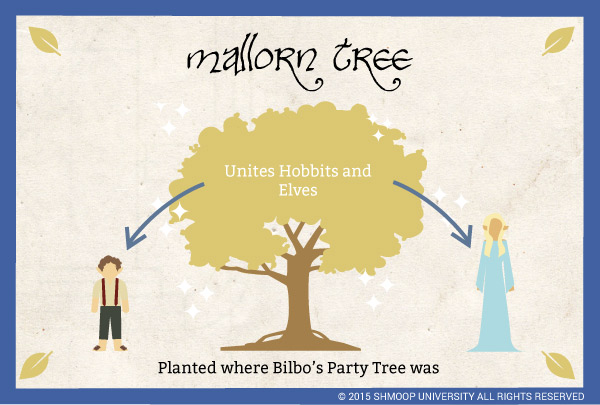Symbolism, Imagery, Allegory

(Click the infographic to download.)
Sam plants the mallorn nut he receives from Galadriel right where Bilbo's Party Tree used to be. There is a nice continuity there. The tree where Bilbo held his Long Expected Party before leaving the Shire forever has now been replaced by an elvish tree that Bilbo would have loved.
But it's also a powerful symbol for another reason. Where once the divide between High Elvish business and hobbit life was absolute and total, by the end of The Return of the King, ordinary hobbits have received tokens of gratitude from the great Lady Galadriel herself. Even though Galadriel passes into the West at the end of The Return of the King, the mallorn-tree of the Shire becomes a legacy of her goodness. Tolkien describes the tree:
It was indeed a mallorn, and it was the wonder of the neighborhood. In after years, as it grew in grace and beauty, it was known far and wide and people would come long journeys to see it: the only mallorn west of the Mountains and east of the Sea, and one of the finest in the world. (6.9.21)
And like the White Tree of Minas Tirith, the flourishing of the mallorn-tree demonstrates the health, vitality, and goodness of its home, the Shire. The hobbits of the Shire had to undergo a hard year under the domination of Saruman-turned-Sharkey and his lackeys, but the mallorn-tree's planting and growth proves that the Shire has bounced back better than ever before.